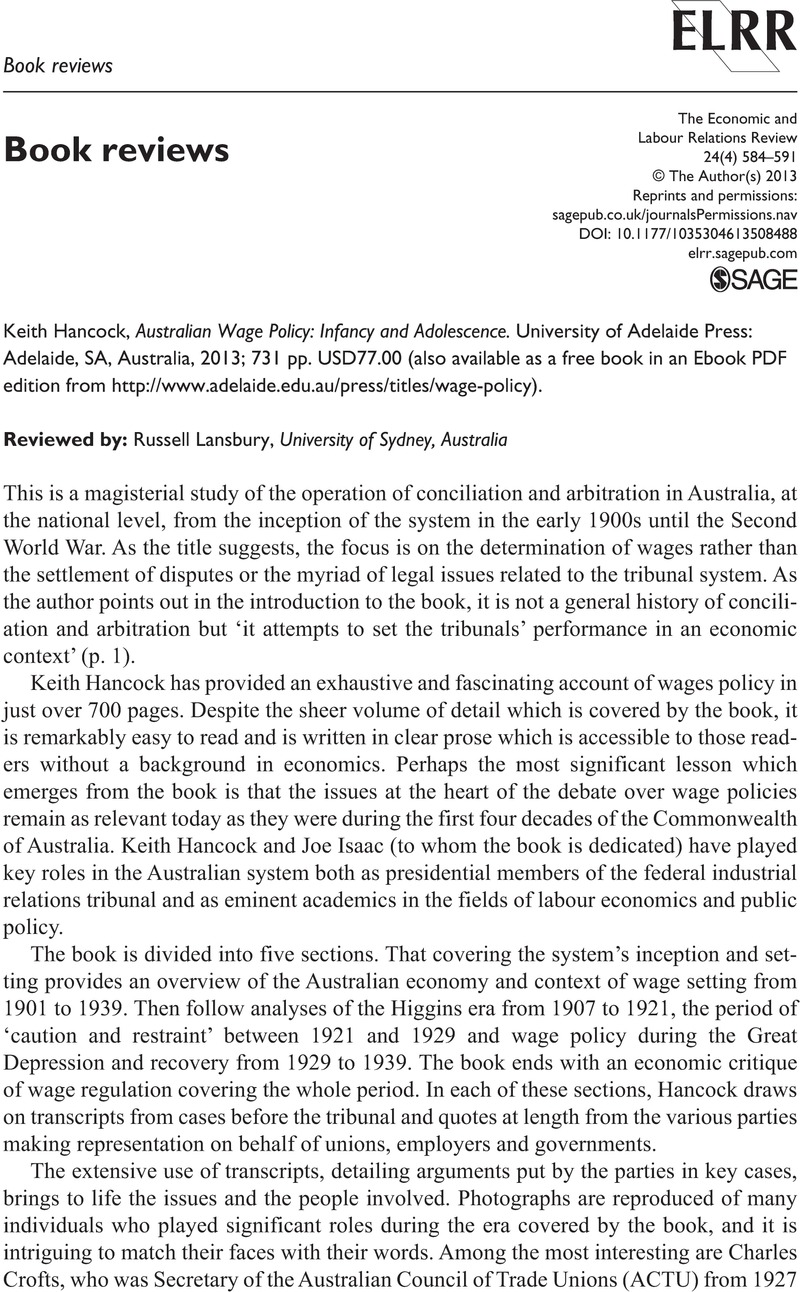No CrossRef data available.
Article contents
Keith Hancock, Australian Wage Policy: Infancy and Adolescence. University of Adelaide Press: Adelaide, SA, Australia, 2013; 731 pp. USD77.00 (also available as a free book in an Ebook PDF edition from http://www.adelaide.edu.au/press/titles/wage-policy).
Review products
Keith Hancock, Australian Wage Policy: Infancy and Adolescence. University of Adelaide Press: Adelaide, SA, Australia, 2013; 731 pp. USD77.00 (also available as a free book in an Ebook PDF edition from http://www.adelaide.edu.au/press/titles/wage-policy).
Published online by Cambridge University Press: 01 January 2023
Abstract
An abstract is not available for this content so a preview has been provided. Please use the Get access link above for information on how to access this content.

- Type
- Book reviews
- Information
- The Economic and Labour Relations Review , Volume 24 , Issue 4: Symposium - The East Asian Developmental State , December 2013 , pp. 584 - 587
- Copyright
- Copyright © The Author(s) 2013


